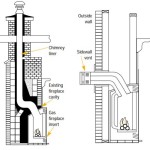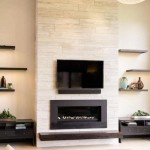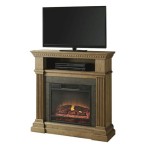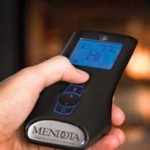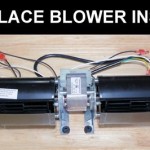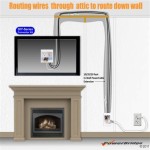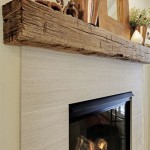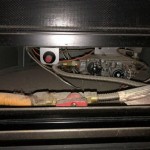Prefabricated Wood Burning Fireplaces: A Comprehensive Overview
Prefabricated wood burning fireplaces, also known as factory-built or zero-clearance fireplaces, offer a compelling alternative to traditional masonry fireplaces. These units are constructed in a controlled factory environment, ensuring consistent quality and simplifying the installation process. They provide the ambiance and warmth of a wood-burning fire without the extensive construction and labor associated with a traditional brick or stone fireplace.
Prefabricated fireplaces are designed for ease of installation, often requiring only a few days to complete, compared to the weeks or even months needed for a custom-built masonry structure. They typically consist of a firebox made of steel or cast iron, an insulated chimney system, and a decorative surround or facing. The insulation properties of prefabricated units allow them to be installed with minimal clearance to combustible materials, hence the term "zero-clearance." This contrasts with traditional masonry fireplaces, which require significant clearances to prevent fire hazards.
While offering advantages in installation and cost, understanding their specific features and limitations is crucial for making an informed decision about incorporating a prefabricated wood burning fireplace into a home.
Efficiency and Heat Output
One key aspect of prefabricated wood burning fireplaces is their efficiency in heat production. Traditional masonry fireplaces can lose a significant portion of their heat up the chimney due to their open design and lack of insulation. Prefabricated units, on the other hand, are designed with improved insulation and combustion control, allowing them to retain more heat within the living space. Many models incorporate features such as air wash systems that keep the glass door clean, enhancing visibility of the fire and contributing to more efficient combustion.
The efficiency of a prefabricated fireplace is typically measured by its heating efficiency rating. Higher ratings indicate that a larger percentage of the wood's potential energy is converted into usable heat. It is essential to consider this rating when selecting a fireplace, especially if heating the room or home is a primary goal. Factors such as the size of the firebox, the quality of the insulation, and the design of the combustion chamber all contribute to the overall efficiency of the unit.
Furthermore, some prefabricated fireplaces are certified by the Environmental Protection Agency (EPA) for meeting stringent emission standards. EPA-certified models burn cleaner, reducing air pollution and contributing to a healthier environment. These models are often required in areas with stricter air quality regulations.
Installation Considerations
The installation process of a prefabricated wood burning fireplace is significantly streamlined compared to that of a masonry fireplace. The units are designed to be installed by qualified technicians, following the manufacturer's specifications and local building codes. The chimney system, often comprising interlocking sections of insulated pipe, is typically included with the fireplace and designed for easy assembly. This simplifies the process and reduces the potential for errors during installation.
Before installation, it is crucial to obtain the necessary permits and inspections from the local building authority. These permits ensure that the installation complies with building codes related to fire safety, structural integrity, and ventilation. A thorough inspection may involve checking the clearances to combustible materials, the stability of the foundation, and the proper venting of exhaust gases.
The location of the fireplace within the room is also a critical consideration. Ideally, the fireplace should be positioned in a central area to maximize heat distribution. However, factors such as the existing framing of the house, the availability of an exterior wall for venting, and the desired aesthetic appearance of the room will all influence the final placement of the unit.
Design Options and Aesthetics
Prefabricated wood burning fireplaces offer a wide range of design options to complement various architectural styles and interior decor. The firebox itself can be exposed, partially recessed, or fully integrated into a custom surround made of materials such as stone, brick, or wood. The facing, which surrounds the firebox opening, can be customized with different materials, colors, and textures to create a unique look.
Many manufacturers offer a variety of styles, ranging from traditional to contemporary. Traditional models often feature raised hearths, decorative mantels, and intricate moldings. Contemporary models tend to have clean lines, minimalist designs, and a focus on maximizing the viewing area of the fire. The choice of style ultimately depends on the homeowner's personal preferences and the overall style of the home.
In addition to the firebox and facing, the chimney system can also be customized to enhance the aesthetic appeal of the fireplace. Chimney caps, decorative shrouds, and various finishes can be added to the chimney to blend it seamlessly with the roofline and surrounding landscape. This allows homeowners to create a cohesive and visually appealing design that integrates the fireplace into the overall architectural design of the home.

New Wood Burning Prefab Fireplaces Complete Fireplace Installs

New Wood Burning Prefab Fireplaces Complete Fireplace Installs

All About Prefabricated Fireplaces Chimney Savers

Zero Clearance Vs Prefabricated Fireplace Full Service Chimney

Wood Burning Fireplaces Zero Clearance Fireplace Install

Woodland Park Co Prefab Fireplace Wood Burning Installation

Superior Prefab Wrt Wct 2000 Series Indoor Fireplace Bollens Antique Hearth Llc

Superior Fireplaces 50 Inch Winston Luxury Series Wood Burning Fireplace Fine S Gas

What Is A Prefabricated Fireplace Kansas City Service

Pre Fabricated Fireplaces Canadian Home Inspection Services
Related Posts

